
Ultimate Guide to Residential Landscaping Transformation
Published: 13/02/2023 | Updated: 21/01/2025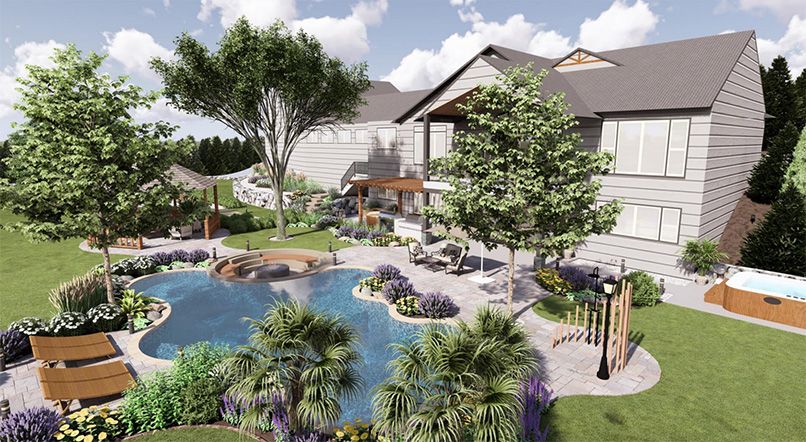
Key Highlights
- Boost Curb Appeal: Enhance your home's first impression with a well-designed landscape.
- Create Outdoor Rooms: Extend your living space with functional patios, decks, and seating areas.
- Sustainability Matters: Embrace eco-friendly practices with drought-tolerant plants and recycled materials.
- Year-Round Beauty: Plan for seasonal interest by incorporating plants with varying bloom times and foliage.
- Seek Professional Guidance: Consult with landscape experts for personalized designs and efficient execution.
Introduction
A good landscape design can change your front yard into a stunning space. It helps boost your home's curb appeal a lot. It is not just about planting flowers. It is also about mixing different elements that match your architectural style and show off your personality. This guide will help you understand the main rules, useful tips, and creative ideas to design a residential landscape that improves your outdoor space.


Planning Your Landscape Design
Before you start planting, it's important to make a clear landscape plan. This plan will help you make choices that fit your needs and ideas.
Start by looking at what your yard has. Think about the soil type, how much sun it gets, and what features are already there. Write down what you want to achieve. This might be an outside area for entertaining, a calm garden, or just improving your home's curb appeal. A good plan is key for a successful landscaping project.
Assessing Your Yard's Needs and Potential
A good site analysis is very important before you start your landscape design. This means you need to look closely at your yard's strengths, weaknesses, and possibilities. Start by checking how much sunlight different parts of your yard get during the day. Find the sunny spots that get "full sun," the ones that have some shade, and those that stay mostly shaded.
You should also think about the land shape and soil type. Is your yard flat, or does it slope? Knowing what kind of soil you have will help you choose the right plants that will grow well. Pay attention to features you want to keep, take out, or work around, like trees, buildings, or power lines. By understanding your yard's unique traits, you can create a better and more successful landscape design.
Choosing a Theme for Your Landscape
Selecting a good theme adds a personal touch to your garden design and helps everything fit together. A clear theme guides all your design choices. You can find inspiration from what you like, your architectural style, and the natural surroundings.
If you want a formal look, think about a symmetrical garden. This could include neatly trimmed hedges, straight pathways, and classic plants like roses or boxwoods. For a more casual feel, a cottage garden that has colorful flowers, winding paths, and rustic features can look charming. If you like a modern and simple style, adding drought-tolerant plants, gravel beds, and clean lines will work well. Defining a theme makes your landscape look good and cohesive.
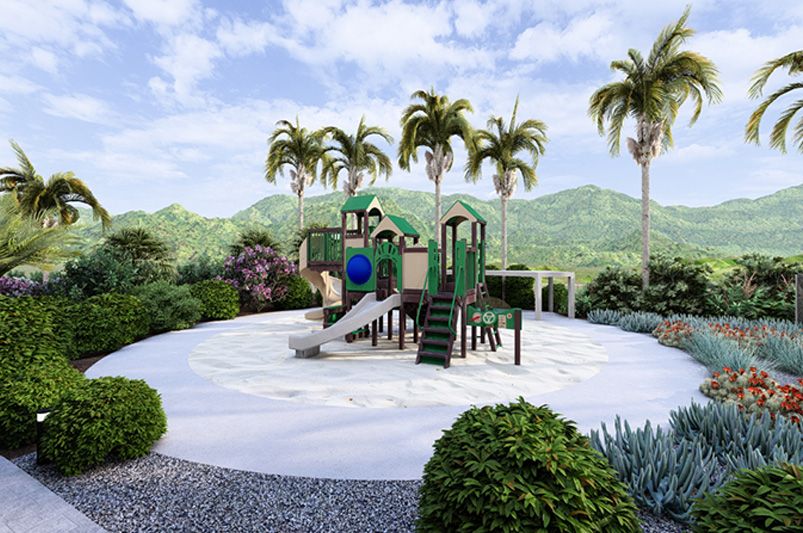
Incorporating Functional Spaces into Your Design
When you design your landscape, think about how you will use your outdoor space. Adding useful areas can turn your yard into an extension of your home. It can be a place for relaxation, entertainment, and play.
Begin by defining different areas for their specific uses. For example, set up a patio or deck for dining and entertaining. Make a cozy spot with comfortable furniture for chilling out. If you have kids, add a play area with a swing set or sandbox. If you like gardening, think about a spot for a vegetable garden or a cutting garden. With some careful planning, you can create an outdoor oasis that fits your lifestyle and needs.
Innovative Features to Elevate Your Yard
Adding new features to your yard can create a special outdoor space. These features will improve how your yard looks and offer useful things to make the experience better.
You can think about adding water features, fire pits, or outdoor lighting to set the mood. You can also create areas for different activities. For example, you can have a dining spot with a pergola for shade or a nice area with a fire pit for spending time together. By adding these features, you can change your yard into a lively and welcoming space.
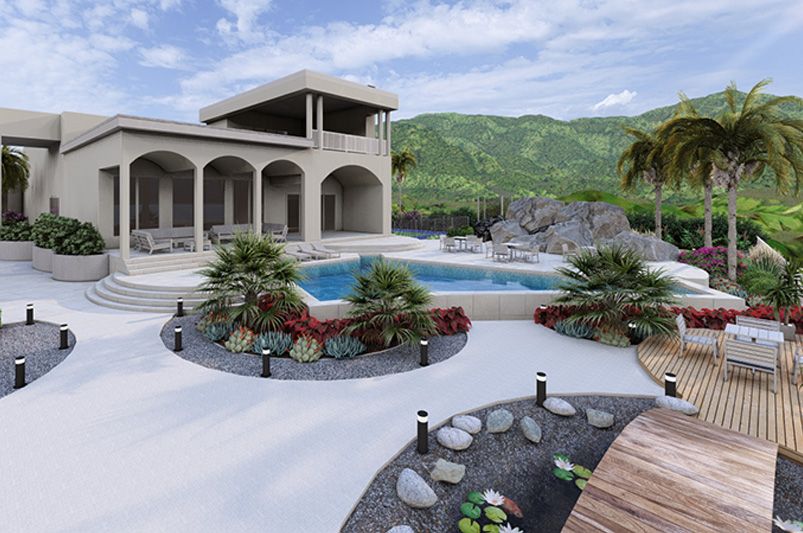
Water Features and Their Benefits
Introducing water features, like a fountain or a pond, can create a relaxing vibe in your yard. The soft sound of flowing water adds calmness and helps block out noise. It also makes a nice focal point in your landscape design.
Ponds bring a natural environment to your yard. They attract useful wildlife like dragonflies and frogs. These creatures can help reduce mosquito populations. Besides looking good, water features provide ecological advantages. They draw in pollinators such as birds and butterflies, making your outdoor space livelier. Think about the size and style of the water feature that best fits your design and theme.
Outdoor Lighting Solutions for Nighttime Aesthetics
Outdoor lighting lets you enjoy your yard even after the sun goes down. It makes your space safer and more secure while also making key areas stand out and adding a special mood. When you place lights smartly, they can brighten pathways, steps, and possible dangers. This helps people move safely at night.
Use different lighting styles, like uplighting, downlighting, and path lighting, to add depth and shape to your space. You can bring attention to your home's features, show off special plants, or make a warm and welcoming atmosphere for outdoor gatherings. Choose energy-saving LED lights since they use less power and last longer than regular bulbs.
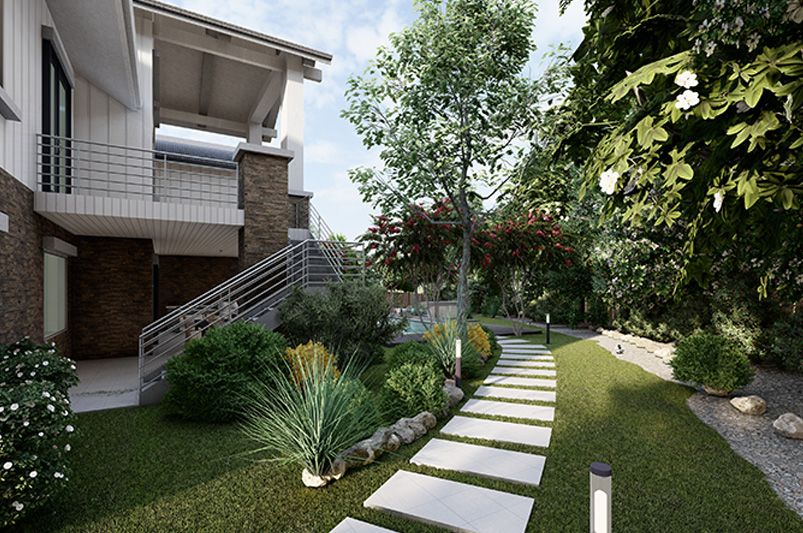
Building Privacy with Plants and Structures
Creating privacy in your yard helps you feel private and cozy. It also sets clear boundaries and makes your home look better. You can mix plants and structures to get the privacy you want.
Think about planting evergreen hedges. They offer privacy all year long and act like a natural fence. You can also use different types of fencing, like wood, vinyl, or metal, to mark your space. Trellises with climbing plants, such as clematis or honeysuckle, look nice and give you extra privacy. Placing shrubs and trees in the right spots can block views and create quiet areas in your yard.
DIY Landscaping Projects vs. Hiring Professionals
Deciding whether to do landscaping projects on your own or hire professionals depends on a few things. These include how complex the project is, how much money you can spend, and how much time you can commit. Tackling landscaping by yourself can save you money and give you a sense of achievement. However, some projects may require the skills of experts.
It's important to check your abilities, the tools you have, and how big the project is to help you choose. Sometimes, a mix of both methods works best. You can handle smaller tasks yourself and ask for help from professionals with the more complicated parts.
Pros and Cons of DIY Landscaping
DIY landscaping projects let homeowners shape their outdoor areas. This can save money and bring personal satisfaction. By doing things like planting, mulching, and pruning on their own, homeowners have full control over design. This helps make sure it meets their ideas. Plus, DIY landscaping is a great way to connect with nature and see your work take shape.
Still, planning and research are important for DIY landscaping to avoid common mistakes. You need to know your skills and how much time you can give to the project. It's smart to get the right tools and equipment that you will need. If your project is complex, like hardscaping or grading, it’s a good idea to get help from professionals. They can make sure everything is done well and on time.
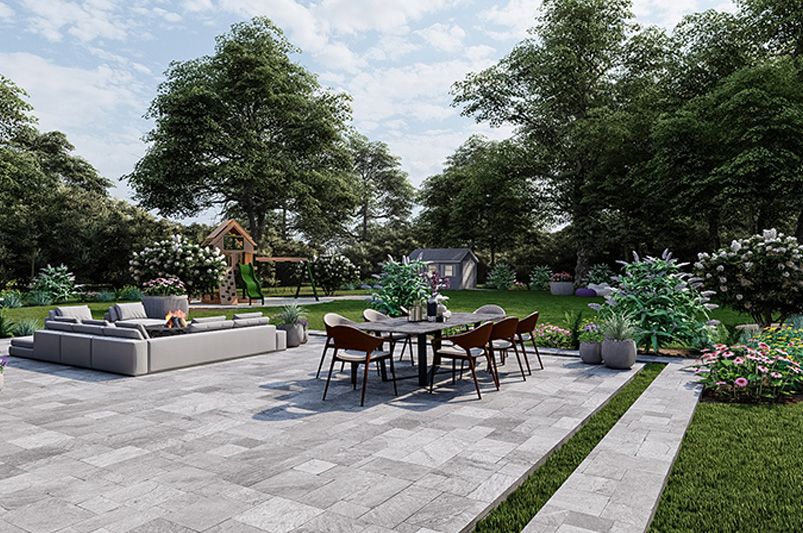
When to Consider Hiring a Landscaping Professional
While doing your own landscaping has its perks, there are times when you need expert help. Professionals have the knowledge and skills to make sure your project looks great and is done right. Think about hiring them for tricky tasks that need special skills or tools. This includes setting up retaining walls, patios, or fancy water features.
If your job needs a lot of grading, solving drainage issues, or big changes to the landscape, professionals can really help. Landscape architects, designers, and contractors know a lot about picking the right plants, installing hardscape features, and following local rules. Their skills help turn your ideas into a beautiful and working space.
Conclusion
Transforming your yard with creative designs for landscaping is a fun way to make your home look better and work well. If you learn the basics and plan carefully, you can create a beautiful outdoor space that shows your personal style. Choose plants, materials, and unique features that fit your needs to improve how your yard looks. You can do the projects yourself or get help from professionals. Landscaping gives you many ways to make your outdoor space personal. Take this chance to make your vision a reality and share your amazing changes on social media for ideas!
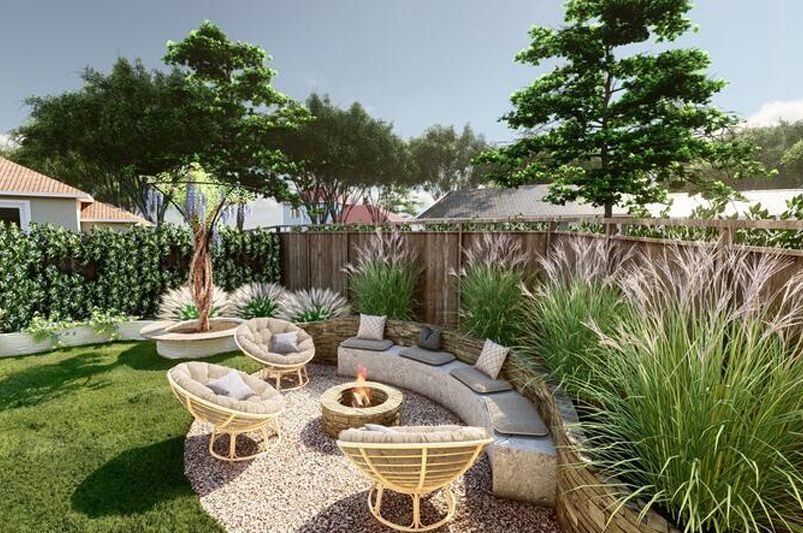
Frequently Asked Questions
What are some low-maintenance plants for residential landscaping?
Low-maintenance plants are perfect for busy homeowners who want a lively garden without too much lawn care. Think about options such as succulents, ornamental grasses, and native shrubs. These plants need very little watering, pruning, and care. This way, you can have a lovely landscape without the extra effort.
How often should landscaping be updated or redesigned?
Updating or redesigning your landscaping regularly is important to keep your outdoor space looking fresh and lively. How often you need to do this can depend on how fast your plants grow and what you like. Usually, it’s a good idea to refresh your space every 5 to 7 years.
Can landscaping improve property value?
A nice and well-kept landscape can really increase your property value. It improves curb appeal and looks good overall. This creates a great first impression. It also adds to how valuable your property seems, making it more appealing to possible buyers.
What are the best seasons for landscaping projects?
The best time for landscaping projects depends on your climate and the kind of work you are doing. Usually, fall and spring are good seasons for planting. This lets the roots settle in before the harsh heat of summer or the cold of winter.
How can I create a residential landscaping design on a budget?
Creating a beautiful landscape doesn't have to cost a lot of money. You can choose affordable landscaping options. For example, use smaller plants and buy materials from local sources. You can also split perennials to get more plants. Think about working on your project slowly, starting with small sections that are easy to manage.
Need Assistance with a Complete Residential Landscape Makeover?
Shrubhub’s residential landscape design packages can significantly transform the lives of homeowners by delivering customized, professional landscaping plans tailored to their unique space and personal style. With the ease of online collaboration, you are guided step-by-step through a design process that fundamentally reshapes your outdoor environment. The result is an aesthetically pleasing and functional outdoor living area that maximizes the potential of your property.


